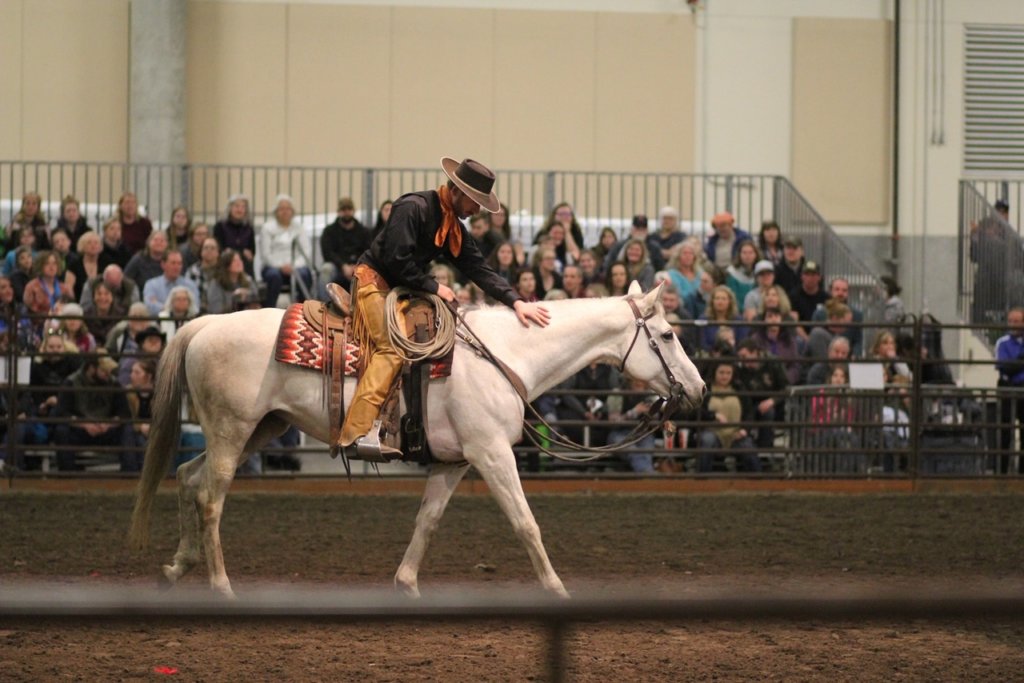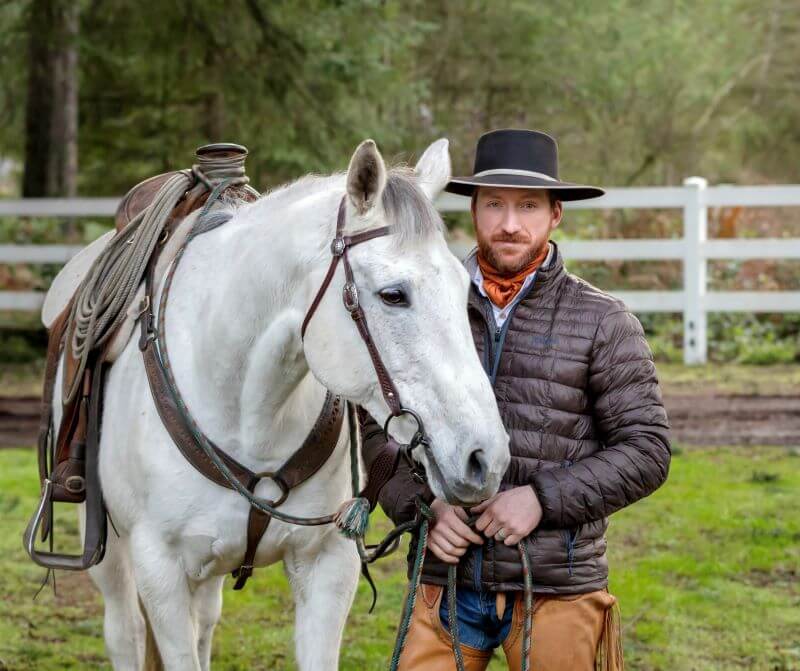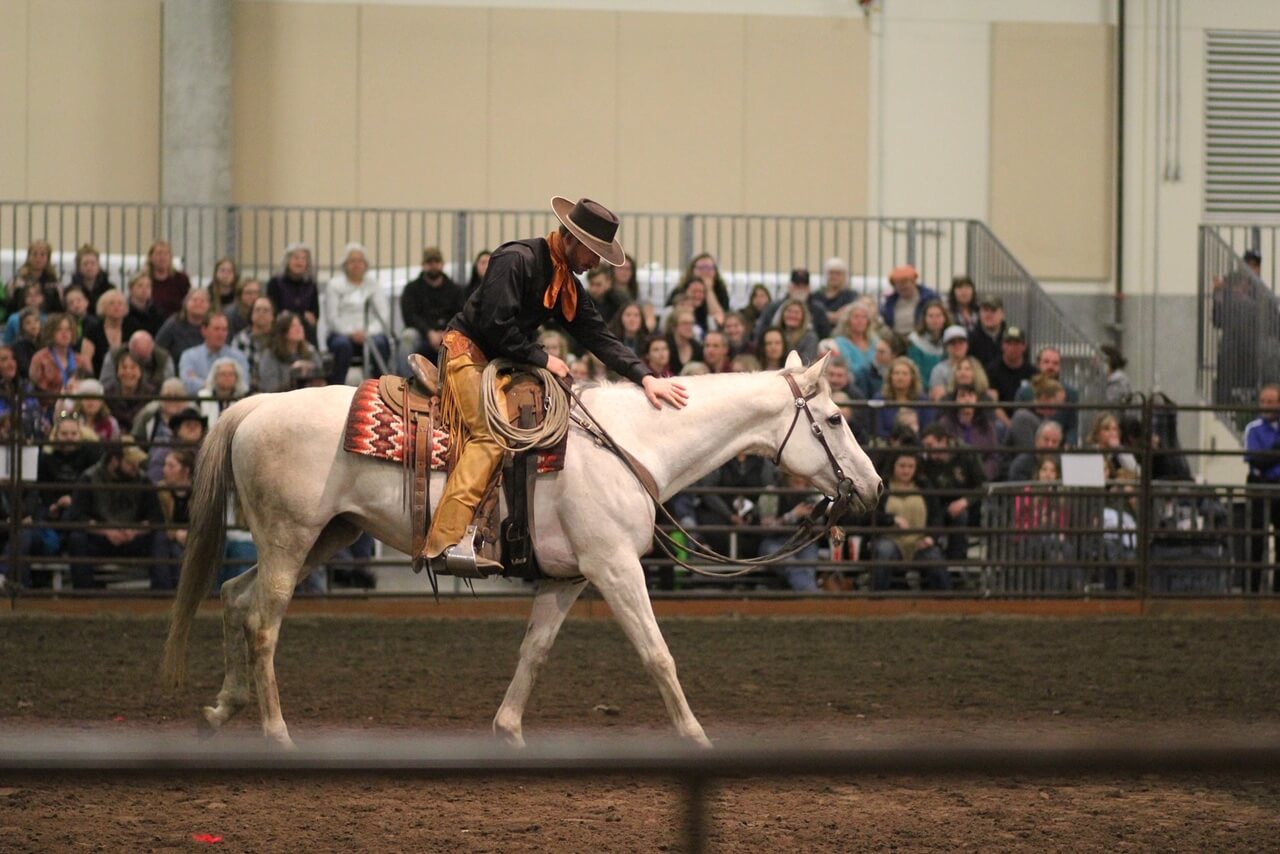Direct Your Horse and Let Him Do His Job
By Evan Bonner

Does your horse take the initiative in his work? Why should we ask our horse to be responsible? Do you allow your horse to be accountable for his actions, and how do you do that? I believe the only way we can make a willing partner of our horse is by asking him to be responsible for his actions in our partnership. So, how do we ask our horse to be responsible?
Let’s start here: have you heard the popular horsemanship saying, “Do less to get more?” I like it a lot, but I think sometimes it’s misunderstood. There’s a place you are looking for with your horse where you can eventually do less.
For example, when you ask him to move over you want him to roll his own body over. This is because horses have a brain, nervous system, and muscles and are the ones that ultimately make the choice to execute the movement. In a true partnership with our horse, all we should do is present an idea to the horse, create a feel, and then the horse does it. Refinement comes through the creation of precision.
Now, think about when you work your horse. What does it look like? Do you move your hands and legs (or the lead rope) and try to make the horse do whatever it is you’re asking him to do? Ask yourself the following questions: Are you doing it? Are you forcing the horse to do whatever you want him to do? Or is the horse choosing and executing it himself? Often, we do not leave any responsibility up to our horses. We don’t wait!
This is one of the main themes we want to focus on as we advance our horsemanship. Get your horse to a place where, when you ride him, it doesn’t look like you’re making him work. Horse and rider should look like one; there should be no perceptible movements from the rider, and the two look like partners in a dance. This is what separates someone who just gets by with his horse from someone exceptional who has formed a true partnership with his horse. It’s feel.
When I ride my horse, I keep this on my mind. I don’t want to force maneuvers. I want my horse to pick up on the cues and choose to do them. I have my body, they have theirs. Eventually all I want to do is create a feel and a direction and then the horse decides.
At times we’ll have to use a rein, our legs, create pressure, release pressure, etc., but for now it’s not just what movements we’re doing. It’s how we’re teaching the horse to be an equal partner.
In fine horsemanship everything ultimately has to be the horse’s idea. That’s what every great horseman will tell you. You’ve got to get the horse to turn loose to you. It’s easy to get your horse to respect your hands and legs, but the key is to get your horse to hook onto a job. You create the feel and your horse takes over the responsibility.
You are always there to support the horse but there’s a place where they find their own way through things. They have to support themselves a little bit and control their emotions. This is because when we get into a situation where the pressure’s on, they need to be able to think their way through it.
So, getting back to the phrase I quoted at the beginning, I don’t look at it as us doing less; I look at it as asking the horse to do more. It’s about putting more responsibility on our horse so we can do less.
Some people do very little all the time, but they end up just idling—there’s nothing happening, there’s no connection, there’s no life in their horse. Training’s not about doing less and then the horse also does less. It’s about the horse taking on the responsibility. Otherwise, pretty soon, your horse is just dragging his feet in the mud.
So how do we start giving our horse more responsibility? By directing the horse more and correcting less. Correcting is telling. This is where humans have a hard time. The key is to learn how to direct the horse and allow him to take the responsibility. Your horse will learn over time to correct himself.
You need to make it feel good to your horse to be on the task at hand, and difficult to be off task, whatever the objective might be. In the beginning the tasks are very simple but they progress over time. The ultimate result is a horse who understands his job— a true willing partner.

Evan Bonner grew up in Port Orchard, Washington. He lived around horses all of his life. As a teenager he became serious in chasing horsemanship, and after high school he began helping people with their horses and starting colts. He continued learning the philosophy of true horsemanship.
He has been mentored by many great horsemen in his life, including Buck Brannaman, Peter Campbell, and Dennis Reis. Evan teaches the techniques of proper riding and operating a horse, but he also teaches the concept of learning to work through feel. Evan believes that the secret to horsemanship is getting the horse to prefer to be with you than any other place – whether you’re on the ground or on their back. He and his wife reside at their training facility in Port Orchard, Washington where Evan trains horses and conducts clinics year-round.
www.EvanBonner.com
info@evanbonner.com
(360) 551-3736


